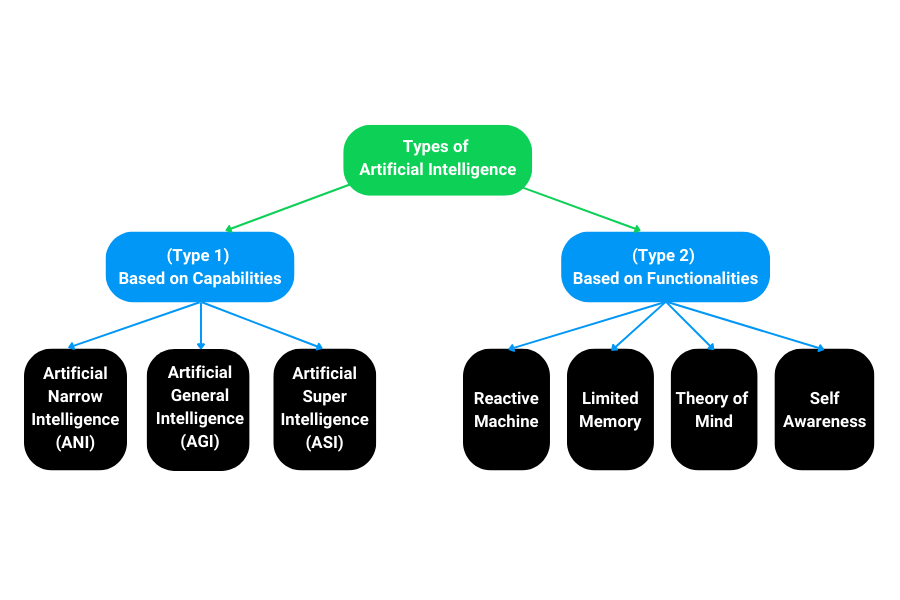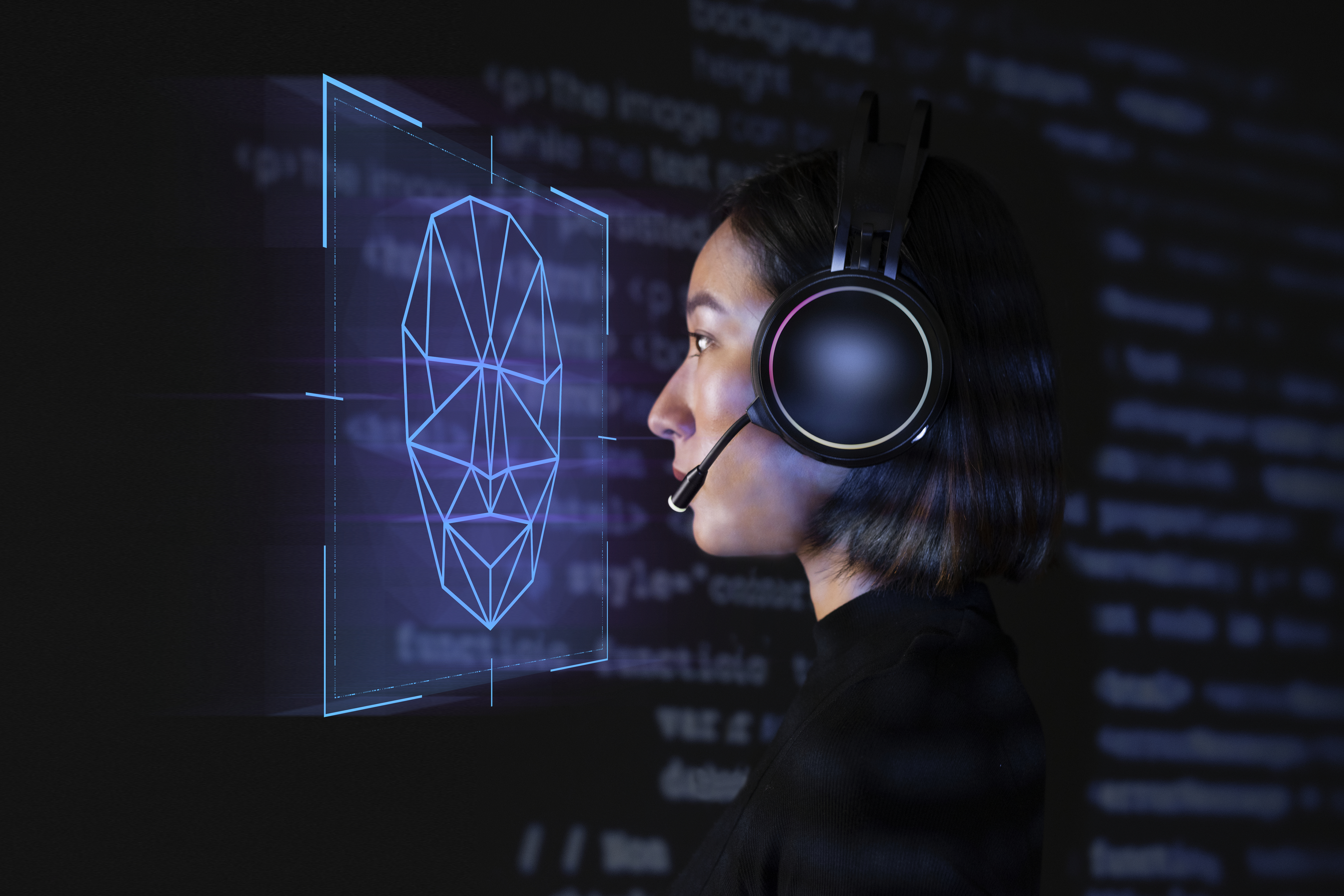Artificial Intelligence (AI) plays a vital role in assisting humans in achieving technological innovations and scientific advancements that once had been in our imagination or fiction movies. From chatbots to virtual assistants, industrial machinery, and self-driving cars, the applications of AI make our everyday lives easier than ever.
A recent study by Pricewaterhouse Coopers (PWC) predicts that AI will contribute $15.7 trillion to global GDP by 2030. Undoubtedly, AI will accompany us for a long and prosperous future ahead.
However, have you ever grasped the true nature of AI? What is it? When was it born? How many types of it? What are the pros and cons of AI?
Let’s find the details in this article.
What is Artificial Intelligence?
According to Wikipedia, the term “Artificial Intelligence” refers to machines that mimic and display “human” cognitive skills that are associated with the human mind, like “learning” and “problem-solving.”
History of Artificial Intelligence
- 1956 – The term “Artificial Intelligence” was first introduced in 1956 by John McCarthy, an American Computer scientist at the Dartmouth Conference. At that time, AI was considered an academic field.
- 1966 – Major researchers emphasized developing algorithms that can solve mathematical problems. A German American computer scientist at the Massachusetts Institute of Technology (MIT), Joseph Weizenbaum, created the first chatbot – ELIZA.
- 1972 – WABOT-1, a robot resembling the human body in shape, was first built. Its design may be for functional purposes, like interacting with human tools and environments, or for experimental purposes, like studying bipedal locomotion.
- 1997 – Supercomputer “Deep Blue” defeated Gary Kasparov, a world chess champion.
- 2002 – Ai entered the home in the form of Roomba, a vacuum cleaner.
- 2006 – AI came into the business world. Companies, including Facebook, Netflix, and Twitter, started employing AI.
- 2007 to the present day, we have AI in various forms and functions, such as speech recognition, robotic process automation (RPA), virtual assistant, dancing robots, smart homes, etc.

Types of Artificial Intelligence

Scientists classified AI in 2 ways, based on its Functionality and its Capabilities as in the following criteria:
Based on Functionality:
- Reactive Machines: AI that performs basic operations, does not have memory-based functionality, and cannot “learn.” These machines automatically respond to a limited set or combination of inputs.
- Limited Memory: refer to an AI’s ability to store historical data to make better predictions. Most existing applications come under this AI category, from chatbots and virtual assistants to self-driving vehicles.
- Theory of Mind: This AI could understand human motives and reasoning. Thus, it can infer human intentions and predict behavior.
- Self-Awareness: This AI type is the future of technology in our lives. It has a sense of self – consciousness. A machine with self-awareness understands its own current state. However, this AI has not existed yet.
Based on Capabilities:
- Artificial Narrow Intelligence (ANI): refers to AI systems that focus primarily on one single narrow task with a limited range of abilities. These machines only do something that they are programmed to do. It is one type out of the three currently around in our lives. Examples of this type are Natural Language Processing or Siri.
- Artificial General Intelligence (AGI): is used to describe machines that can think, learn, understand, and function like human beings. These systems will be able to build multiple competencies independently. That helped us massively cut down on the time needed for training.
- Artificial Super Intelligence (ASI): indicate AI systems that match and surpass the human mind. Not only could they carry out tasks, but they would even be capable of having emotions and developing relationships.
Advantages and Disadvantages of Artificial Intelligence
Artificial Intelligence has pros and cons, much like any other concept or innovation.
Advantages
- AI is available 24/7 and can work endlessly without breaks. Meanwhile, humans need time off to balance their work-personal life. Employing AI helps employees save time by cutting down on tedious, repetitive tasks.
- AI handles information better than humans, as it can process and analyze massive amounts of data at incredible speed.
- AI reduces human errors and increases accuracy. The decisions taken by AI are processed by a certain set of algorithms based on information previously collected. When programmed properly, these errors can be reduced to zero.
- AI can handle small, repetitive tasks that humans wouldn’t find particularly enjoyable.
- AI can be used as digital assistance, eliminating human personnel needs. The typical applications are chatbots, which help respond to customers’ inquiries precisely and promptly.
- AI would create new jobs that require high-paying skilled labor. In automotive factories across the United States, assembly line workers are replaced by intelligent robotics driven by advanced AI. The staff isn’t leaving the factories but working as robotics technicians. That helps boost productivity and gain much more profits that later are invested in workforce training programs. Those same workers are now benefiting from better-paying jobs.
Disadvantages
- The implementation cost of AI is relatively high. In reality, the research and development of AI require plenty of time and cost. AI also needs to stay updated and meet the latest requirements, thus making it quite costly.
- AI lacks creativity. AI is not yet developed to be creative in the same way humans do. AI learns with pre-fed data and past experiences. On the contrary, human brains are distinguished by immense sensitivity and a high emotional quotient, allowing us to imagine and create unprecedented events in our minds.
- AI increases the unemployment rate in a few cases, especially in business, education, and government sector. As AI proves its efficiency, companies, and organizations are implementing intelligent automation to replace minimally qualified individuals with machines that can do the same work with higher accuracy and productivity.
The Bottom Line
It is no doubt that AI has reshaped our lives already and will continue to do so. However, AI can’t replace human beings completely in the near future. It’s just created to augment human intelligence, assisting us with repetitive, time-consuming, tedious tasks, enabling us to increase work efficiency and make decisions faster.



